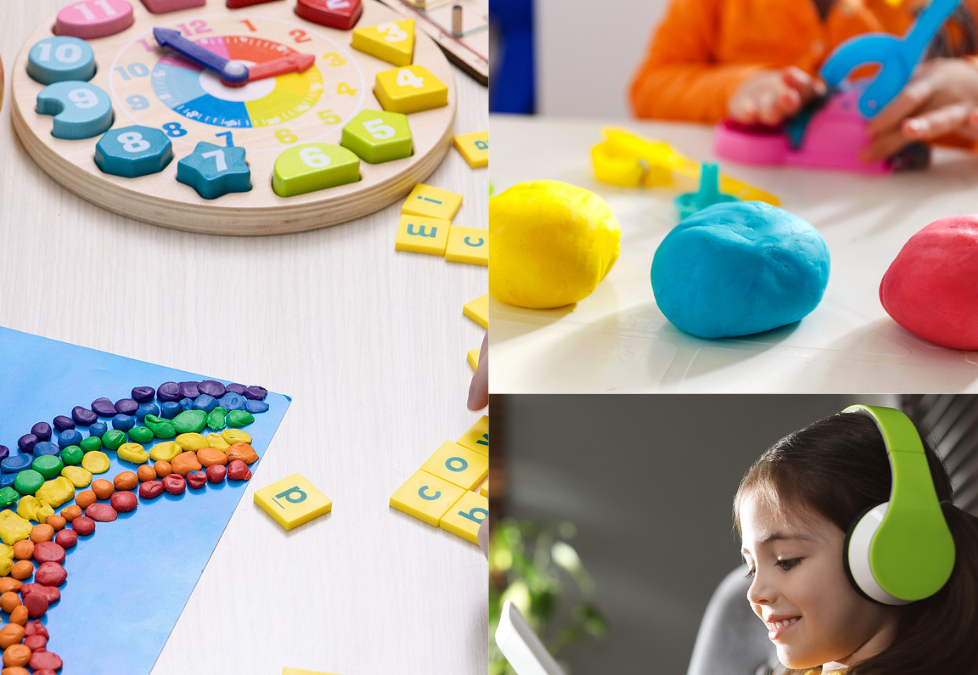Five fun activities for dysgraphia to enjoy at home
If your child suffers with dysgraphia, you will have no doubt watched them struggle with all aspects of writing. This common learning difficulty significantly impairs handwriting and the ability to express thoughts through the written language. For more information on what dysgraphia is, click here.
While it’s hard to watch our children struggle, there are things we can do at home to help their fine motor skills, finger grip, confidence and writing ability. The following fun activities for dysgraphia will make a significant difference if practiced regularly.
1. Dictation
Dictation exercises can be fun! They are a great tool for improving both handwriting and decoding. You can start by simply reading one letter out loud and have your child write it down. Move onto spelling out fun words. Once they have mastered this, try them with note-taking exercises. A great game is to have your child compile the list you are dictating. It could be a list about places you want to visit, games you want to play, movies you want to watch. It doesn’t matter what the list is about, the main thing is that your child compiles it as you say it.
2. Prompts
Introduce a topic your child is interested in by creating a funny prompt. Give them five minutes to compose a short paragraph related to the topic. It should be completed without stress or pressure and in a relaxed way with as much humour injected into the task as possible.
Dysgraphia can be incredibly frustrating, but with the right support, children can flourish. I’ve said before and I will say it again, practice touch typing and use tools such as speech-to-text when possible. When it comes to writing tasks, make sure your child has enough time to complete the work. I’ve found with Ella that short bursts are far more productive than trying to finish the work quickly. It’s physically painful and exhausting. A well written paragraph is always better than rushing out three illegible ones.
3. Play with Play-Doh/modelling clay
Dexterity and finger strength is very important when it comes to handwriting. If your child has dysgraphia, their fine motor skills will need work on and the strength in their fingers will need to be improved. Even playing with Play-Doh for just 30 minutes a day will increase both strength and dexterity. As the muscles in their fingers strengthen, so it will become easier to grip pens and pencils. A good game is to roll the clay/Play-Doh out and practice making letters. This is particularly useful for pre-school children as it reinforces the shapes of the letters.
[amazon box = “B00JM5GZGW”]
4. Mazes (pen and paper ones)
The fine motor control required for completing mazes does not come easy to all kids. This fun activity for dysgraphia is great practice for control, strength and fine motor skills. To reach the end of the maze, children must keep their pen or pencil within the lines which will start to improve their coordination. Mazes are also great fun which is an added bonus.
[amazon box = “1629796271”]
5. Memory Games
It’s important to remember that dysgraphia does not only affect writing. It actually impairs the process of storing new words in the working memory as new letters are examined. A good way to improve memory is with games. Your child will not feel like they are doing work, but will be improving an essential developmental skill. Good memory games include:
– Saying a letter, getting your child to visualize it before writing it down 20 seconds later.
– Give your child a short list of animals to memorise. Ask them to repeat the list backwards. Start with three animals and add more as they improve. You can help your child come up with ways to improve their memory by visualising what they are meant to be memorising.
– A great game to play while driving is to ask your child to count two different colour cars at once as you pass them. She can use a tally chart or something as simple as R1, R2, R3 etc (red cars) B1, B2, B3 (blue cars). As they improve, ask them to include a third colour.
– When cooking a simple dish such as a pizza, ask your child to memorise the ingredients in order but get them to use acronyms. This will provide another technique to improve their memory. For example, SCOOP (Sauce, Cheese, Onions, Olives, Pepperoni). Fun practice such as this can really help children remember multi-step instructions in the classroom.
Older children will love this list of games for dysgraphia and if you enjoy a family games night, Scattergories is a great option for all children – but especially those with dysgraphia. You will find a list of Scattergory categories ready for a free download here.
I hope you find these fun activities for dysgraphia as useful as I do. I only ever post about activities, resources and experiences I’ve tried and tested myself. For more information on how to support your child with dysgraphia or dyslexia, you will find many useful articles here.
For my list of top 15 tools for dysgraphia, click here


Recent Comments